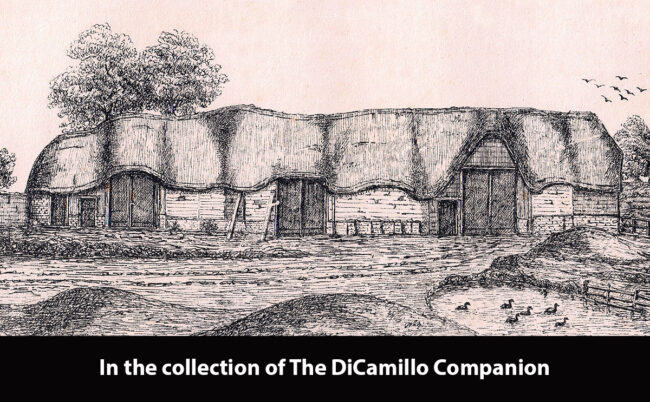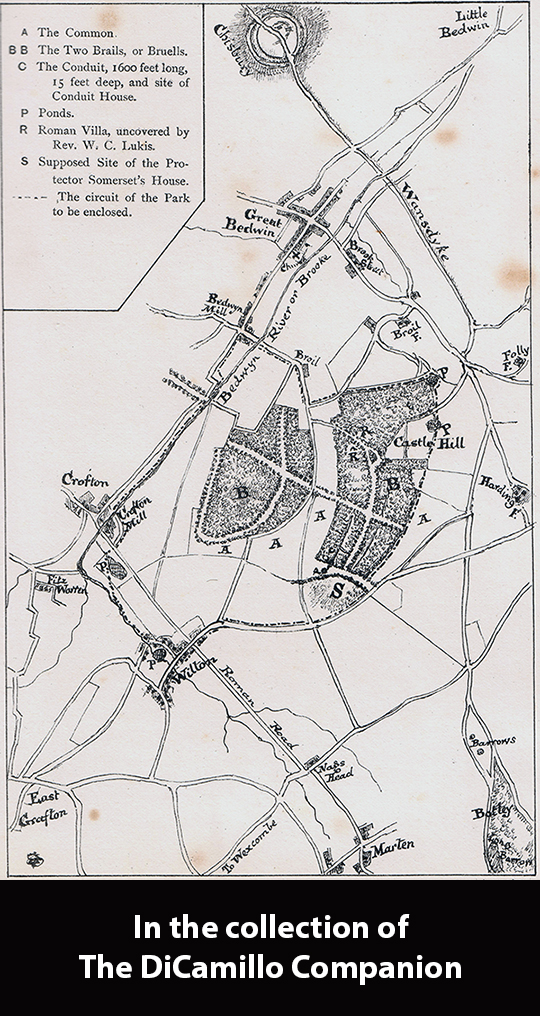
An 1875 drawing of the famous barn where Henry VIII and Jane Seymour celebrated their wedding in 1536

An 1875 drawing of the Wulfhall Estate
House & Family History: Part of the Savernake Estate (which has Tottenham Park at its center), Wulfhall was the manor house of the Seymour family and the birthplace and home of King Henry VIII's third wife, Jane Seymour (the only one of his wives to receive a queen's funeral and his only consort to be buried beside him in St. George's Chapel at Windsor Castle). By 1572 the Seymours had made nearby Tottenham Park, a much grander house, their primary seat, leaving Wulffhall to molder. By the mid-17th century the House was significantly reduced in size; it was completely demolished in 1723, though some outbuildings and ruins survived until the early 20th century. The famous barn where Henry VIII and Jane Seymour reportedly celebrated their marriage in 1536 with a wedding feast (see "Images" section) burned to the ground in the 1920s (there are confirmed visits of Henry at Wulfhall in 1535 and 1539). Glass from the House was installed in the nearby Great Bedwyn Church. Wulfhall is famous today as the inspiration for "Wolf Hall," the 2010 Man Booker Prize-winning novel by Hilary Mantel.
House Replaced By: Very likely beginning life as a farmhouse, today's Grade II-listed Wulfhall is a mostly medieval two-story brick-and-timber house with a tile roof. There were additions in the early 19th century and again circa 1880 (circa 1855 there were major demolitions). The current house sits near the site of the Seymour manor house.
Title: No Voice From the Hall: Early Memories of a Country House Snooper
Author: Harris, John
Year Published: 1998
Publisher: London: John Murray
ISBN: 0719555671
Book Type: Hardback
House Listed: Demolished
Park Listed: Not Listed
Past Seat / Home of: Sir John Seymour, 1492-1536; Edward Seymour, Lord Protector of England, 1st Duke of Somerset, 1st Earl of Hertford, and 1st Baron Beauchamp, 1536-52; Edward Seymour, 1st Earl of Hertford and 1st Baron Beauchamp, 1552-1621.
Current Ownership Type: Demolished
Primary Current Ownership Use: Demolished
House Open to Public: No
Historic Houses Member: No